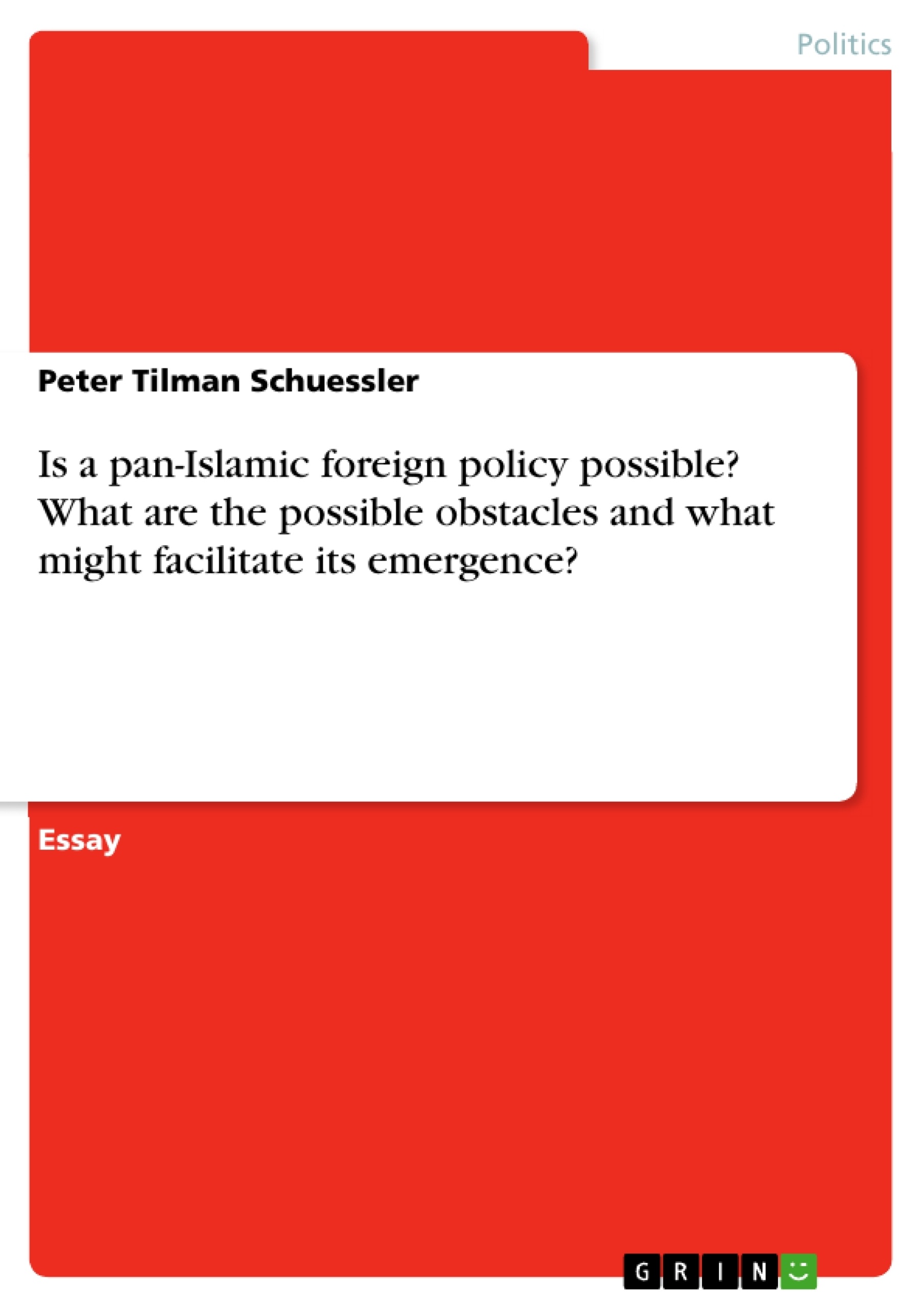We have to look back to the year 750 AD, the end of the Omayyad Caliphs 1, to see the "Islamic world" acting as an united power. The probability of an emergence of a pan-Islamic foreign policy is to be discussed in this essay, which means a foreign policy that involves all Muslim countries and allows them to speak with one voice. Joint policy aims can only be formulated when the interests differ just slightly. The Islamic countries however have few common goals. Firstly this essay will discuss economic, and secondly political and cultural factors. Thirdly the structure of the states will be considered, and finally religious influences will be evaluated. It will be shown that obstacles impeding a collective foreign policy outweigh the driving forces in its favour by far.
Economic issues regularly have a strong impact on foreign policy strategies. The interlinkages between the areas of politics and economics are often so complex, that even one major common aim of two states might not be enough to produce a consensus between them on one policy programme. There might be joint interests like issues concerning oil if we talk about Indonesia and Kuwait, for instance. The differences in their goals, however, are too great to bring them together. Kuwait is rich and tries to retain its wealth, while Indonesia struggles with economic difficulties, inflation and local uprisings. The archipelago depends on the support of the world bank while the Kuwaitis do not know any problems of that kind. Nevertheless there are attempts to combine several nations′ economic interests with one another. OPEC, while not all of its member have an Islamic population (although its most influential and powerful ones do), is a fine example of how international co-operation might work. All participants of that organisation produce oil, and they founded this alliance to raise the world oil price by organised behaviour 2. History shows that this was quite effective in the beginning. Yet this is not enough to be optimistic to create promising prospects for a pan-Islamic co-operation. Since Venezuela has a Christian population, not all OPEC states are Islamic; the organisation can therefore not be seen as a fine prototype for a purely Muslim alliance. Additionally the development of OPEC continued less successfully - in terms of forming a combined foreign policy strategy - than it began.
Inhaltsverzeichnis (Table of Contents)
- Economic Issues
- Political and Cultural Factors
- Inter-State Quarrel
- Cultural Dissimilarities
- Structure of States
- Religious Influences
Zielsetzung und Themenschwerpunkte (Objectives and Key Themes)
This essay explores the possibility of a pan-Islamic foreign policy, investigating the potential obstacles and factors that could facilitate its emergence. The focus is on analyzing the economic, political, cultural, and structural aspects that influence the formation of a unified foreign policy among Islamic nations.
- Economic interests and disparities among Islamic states
- Political divisions and historical resentments within the Islamic world
- Cultural differences and varying levels of secularization
- The role of state structures and religious demographics in shaping foreign policy
- The influence of external actors and alliances on Islamic unity
Zusammenfassung der Kapitel (Chapter Summaries)
The essay examines the potential for a pan-Islamic foreign policy by analyzing various factors. It begins by discussing the impact of economic interests, highlighting the challenges posed by disparities in wealth, resource dependence, and economic goals. The essay then delves into political factors, emphasizing the divisions and historical resentments that exist within the Islamic world. The influence of cultural differences, including secularization and varying cultural practices, is explored as another obstacle. The essay concludes by examining the structure of states, focusing on religious demographics and their impact on foreign policy.
Schlüsselwörter (Keywords)
The key concepts and terms explored in this essay include pan-Islamic foreign policy, economic disparities, political divisions, cultural differences, state structures, religious demographics, and external alliances. The essay delves into the challenges and opportunities presented by these factors in the context of creating a unified foreign policy for Islamic nations.
- Quote paper
- Peter Tilman Schuessler (Author), 2002, Is a pan-Islamic foreign policy possible? What are the possible obstacles and what might facilitate its emergence?, Munich, GRIN Verlag, https://www.grin.com/document/8914



